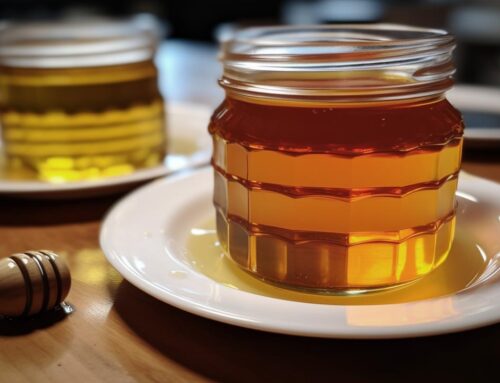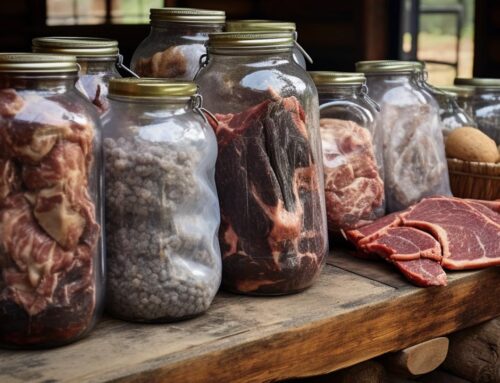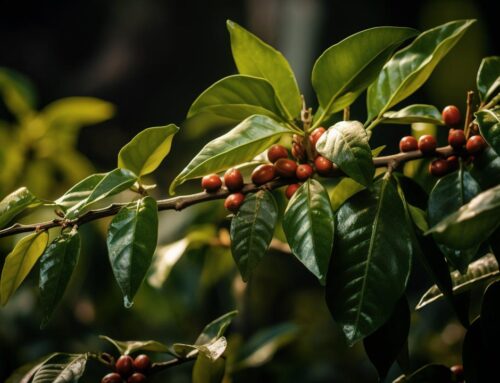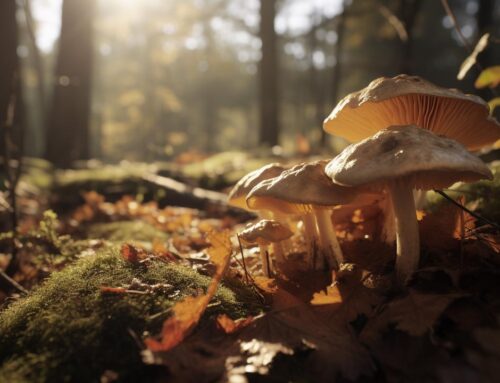Composting is an age-old practice that has gained significant traction in recent years, especially with the rising awareness about sustainable living and the need to reduce waste. At its core, composting is the natural process of breaking down organic matter, such as food scraps and yard waste, into nutrient-rich soil. This soil, often referred to as “black gold,” can then be used to enrich gardens, improve soil health, and promote plant growth. For beginners, composting might seem daunting, filled with terms like “greens,” “browns,” and “aerobic decomposition.” However, with the right guidance, anyone can transform their kitchen scraps into valuable compost. In this comprehensive guide, we aim to demystify the art and science of composting. By the end of this article, readers will have a clear understanding of the benefits of composting, the materials required, the step-by-step process, and the common challenges faced by composting enthusiasts. Armed with this knowledge, you’ll be well on your way to reducing your carbon footprint and contributing to a healthier planet.
Composting for Beginners
Table of Contents
- Benefits of Composting
- Materials Required for Composting
- The Composting Process
- Common Challenges and Solutions
- Frequently Asked Questions
- Final Thoughts
- Sources
Benefits of Composting
Composting, often hailed as nature’s way of recycling, offers a multitude of benefits that extend beyond just waste reduction. Here’s a deeper dive into the myriad advantages of this sustainable practice:
1. Environmental Conservation
- Carbon Sequestration: Composting organic matter helps in capturing and storing carbon dioxide, a major greenhouse gas, thereby playing a role in mitigating climate change1.
- Reduced Methane Emissions: Organic waste in landfills decomposes anaerobically, producing methane, a greenhouse gas 25 times more potent than carbon dioxide. Composting these materials aerobically significantly reduces methane emissions2.
2. Soil Enrichment
- Enhanced Soil Structure: Compost improves soil’s physical properties, including its texture and porosity, making it more resistant to erosion3.
- Increased Water Retention: Compost increases the soil’s ability to retain water, reducing the need for frequent watering and helping plants thrive during dry spells4.
- Balanced pH Levels: Compost can help neutralize both acidic and alkaline soils, bringing them to a neutral pH level optimal for plant growth.
3. Economic Benefits
- Reduced Need for Chemical Fertilizers: Compost acts as a slow-releasing, organic fertilizer, reducing the dependency on chemical alternatives and saving money in the long run.
- Lowered Waste Management Costs: Municipalities can save on landfill space and waste transportation costs by promoting community-wide composting initiatives.
4. Biodiversity Boost
- Habitat for Beneficial Microorganisms: Compost introduces a host of beneficial bacteria, fungi, and other microorganisms to the soil, which aid in plant growth and disease resistance5.
- Worm Attraction: Earthworms, nature’s tillers, are attracted to compost-rich soils, further enhancing soil quality and plant health.
5. Community and Health Benefits
- Community Building: Community composting initiatives bring neighbors together, fostering a sense of shared purpose and responsibility towards the environment.
- Reduced Chemical Exposure: Using compost reduces the need for chemical fertilizers and pesticides, leading to healthier produce and reduced exposure to harmful chemicals.
6. Educational Opportunities
- Hands-on Learning: Composting provides an excellent opportunity for both children and adults to learn about nature’s cycles, waste management, and sustainable living practices.
In essence, composting is a holistic approach to waste management that offers tangible benefits to the environment, economy, and community. By understanding and harnessing these benefits, individuals and communities can make significant strides towards a more sustainable future.
Materials Required for Composting
Composting is a versatile process that can accommodate a wide range of organic materials. While the basics include greens (nitrogen-rich) and browns (carbon-rich), understanding the specifics can help you optimize your compost pile for faster decomposition and richer end-product. Here’s a detailed breakdown:
1. Greens (Nitrogen-rich Materials)
These materials provide essential nitrogen for the composting microorganisms and are typically moist.
- Fruit and Vegetable Scraps: This includes peels, cores, leaves, and any other parts you don’t consume. Avoid adding diseased plants.
- Coffee Grounds and Filters: These are rich in nitrogen and decompose quickly.
- Tea Bags: Ensure the tea bag material is compostable, as some brands use synthetic fibers.
- Fresh Grass Clippings: These break down quickly but should be mixed with browns to avoid matting.
- Plant Cuttings: Fresh trimmings from your garden plants.
- Eggshells: While they are primarily calcium, they’re categorized under greens. Crush them to speed up decomposition.
2. Browns (Carbon-rich Materials)
These materials provide the carbon source for microorganisms and are typically dry.
- Dried Leaves: One of the most common brown materials. They can be shredded to accelerate decomposition.
- Straw and Hay: These are excellent for creating air pockets in the compost.
- Wood Chips and Sawdust: Use in moderation as they can take longer to decompose. Ensure the wood hasn’t been treated with chemicals.
- Cardboard and Newspaper: Shred or tear them into smaller pieces for faster decomposition. Avoid glossy or colored paper.
- Pine Needles: Decompose slowly but can be added in small amounts.
- Corn Stalks and Cobs: These are tougher and should be broken down into smaller pieces before adding.
3. Water
Maintaining the right moisture level is crucial for the composting process. The pile should be as damp as a wrung-out sponge. If it’s too dry, microbial activity will slow down; if too wet, it can become anaerobic and produce foul odors.
4. Compost Bin or Pile
Depending on your space and preference, you can choose from:
- Holding Units: Simple containers where you dump materials and wait. They’re low maintenance but take longer to produce compost.
- Turning Units: These are designed to be turned or rotated, speeding up the composting process.
- Tumblers: Elevated drums that can be rotated easily. They’re efficient but can be more expensive.
- Worm Bins: Specifically for vermicomposting, where worms break down the organic matter.
- Piles: The simplest method, just a heap in your backyard. It requires more space and regular turning.
5. Air
Oxygen is vital for aerobic decomposition. Ensure your compost has enough air by turning it regularly or using a compost aerator.
6. Compost Starter (Optional)
While not necessary, compost starters or accelerators contain microorganisms that can kickstart the decomposition process.
Not all organic materials are suitable for composting. Avoid adding meat, dairy, oils, diseased plants, and any inorganic materials. By understanding and balancing the materials you add, you can ensure a successful and efficient composting process.
The Composting Process
Composting is a dynamic process that transforms organic waste into a nutrient-rich soil amendment. While the basic steps involve collecting materials, layering, and turning, a deeper understanding can help you optimize the process for better results. Here’s a comprehensive guide:
1. Choose the Right Location
- Accessibility: Ensure the compost site is easily accessible year-round, so you can add materials and turn the pile even during colder months.
- Drainage: Choose a spot with good drainage to prevent the compost from becoming waterlogged.
- Sunlight: While composting can occur in both sunny and shaded areas, a sunny spot can help the pile heat up faster, accelerating decomposition.
2. Setting Up Your Compost Bin or Pile
- Size Matters: A minimum size of 3x3x3 feet is recommended for piles to retain heat, but don’t exceed 5x5x5 feet or it might restrict airflow.
- Foundation: Start with a 6-inch layer of coarse, dry materials like twigs or straw at the bottom. This aids in aeration and drainage.
3. Layering Organic Materials
- Alternate Layers: Begin with a layer of browns (carbon-rich materials) followed by a layer of greens (nitrogen-rich materials). This promotes balanced composting.
- Size: Chop or shred larger materials to speed up decomposition.
- Moisture: Each layer should be moistened (not drenched) as it’s added. Think of the dampness of a wrung-out sponge.
4. Maintaining the Pile
- Turning: Every week or two, turn the compost to introduce air, which aids in aerobic decomposition. This also helps in distributing moisture and heat evenly throughout the pile.
- Moisture Check: Regularly check the moisture level. If it’s too dry, sprinkle some water. If too wet, add more browns to absorb excess moisture.
- Temperature: A hot compost pile (between 130°F and 160°F) indicates active decomposition. If the pile cools down, it might need more greens or moisture.
5. Monitoring Decomposition
- Compost Maturity: In 2-6 months, the compost should transform into a dark, crumbly, soil-like substance with a sweet earthy smell. The time can vary based on materials, climate, and maintenance.
- Volume Reduction: The pile will reduce in size as the materials break down.
6. Harvesting the Compost
- Sifting: Use a compost sifter or a mesh screen to separate the finished compost from larger, undecomposed materials.
- Storage: Store the finished compost in a dry location in a sealed container until ready to use.
7. Using Your Compost
- Soil Amendment: Mix compost with garden soil to enhance its nutrient content and structure.
- Mulch: Spread a layer of compost on top of garden beds to retain moisture and suppress weeds.
- Tea: Steep compost in water to create a nutrient-rich “tea” for watering plants.
8. Continuous Composting
- New Batches: As one batch matures, start a new pile so you always have compost in the making.
- Seasonal Adjustments: In colder climates, composting may slow down or pause during winter. However, it will resume as temperatures rise.
Composting is as much an art as it is a science. While these steps provide a guideline, the process can be adapted based on your observations, local conditions, and specific needs. With patience and practice, you’ll develop a keen sense for creating the perfect compost every time.
Common Challenges and Solutions
While composting is a natural process, it’s not always without its hiccups. Whether you’re a novice or a seasoned composter, you might encounter challenges that can affect the quality and speed of decomposition. Here’s a detailed look at common issues and how to address them:
1. Foul Odor
- Cause: Anaerobic decomposition due to excess moisture or lack of air circulation.
- Solution: Turn the compost more frequently to introduce air. If the pile is too wet, add more browns like dried leaves or cardboard to absorb excess moisture.
2. Pile Not Heating Up
- Cause: Lack of nitrogen, insufficient moisture, or a small compost size.
- Solution: Add more greens like fresh grass clippings or vegetable scraps. Ensure the pile is moist but not soggy. If the pile is too small, consider adding more materials or insulating it with straw or cardboard.
3. Pests and Rodents
- Cause: Presence of meat, dairy, or oily foods that attract animals.
- Solution: Ensure you’re not adding non-compostable materials. Bury fresh kitchen scraps in the center of the pile. Consider using a compost bin with a lid or a wire mesh base to deter pests.
4. Compost is Too Dry
- Cause: Insufficient moisture or too many browns.
- Solution: Moisten the pile with water, ensuring it’s damp but not soggy. Add more greens if there’s an excess of browns.
5. Compost is Too Wet
- Cause: Excessive rainfall or too many greens.
- Solution: Add more browns to absorb the moisture. Turn the pile to introduce air and consider covering it during heavy rainfall.
6. Slow Decomposition
- Cause: Large pieces of material, lack of nitrogen, or cold temperatures.
- Solution: Chop or shred materials before adding them to the pile. Introduce more greens or a compost accelerator. In colder climates, insulate the pile with straw or move it to a sunnier location.
7. Presence of Flies or Gnats
- Cause: Exposed kitchen scraps or a pile that’s too wet.
- Solution: Bury kitchen scraps in the center of the pile. If the pile is too wet, add browns and turn it to introduce air.
8. Matted Layers
- Cause: Grass clippings or leaves that have formed dense layers, restricting airflow.
- Solution: Break up matted layers by turning the compost. Mix grass clippings with other materials or add them in thin layers.
9. Weeds in Compost
- Cause: Weed seeds that haven’t been killed due to insufficient heat in the pile.
- Solution: Ensure the compost reaches a temperature between 130°F and 160°F to kill weed seeds. Turn the pile regularly to ensure all parts are exposed to this heat.
10. Acidic Compost
- Cause: Too many acidic materials like citrus peels or pine needles.
- Solution: Limit the amount of acidic materials. To neutralize the pH, add crushed eggshells or garden lime.
Composting is a dynamic process influenced by various factors, including the materials you use, local climate, and maintenance practices. By understanding potential challenges and their solutions, you can ensure a smoother composting journey and a high-quality end product.
Frequently Asked Questions
Final Thoughts
Composting is more than just a sustainable practice; it’s a commitment to nurturing the earth and giving back to it. The most crucial takeaway from this guide is the profound impact a simple act like composting can have on the environment. By diverting waste from landfills, enriching the soil, and reducing the need for chemical fertilizers, composting serves as a testament to the harmonious relationship humans can have with nature.
Sources
- Cornell Waste Management Institute – Aerobic Decomposition
- EPA – Reducing Methane Emissions
- NC State Extension – Soil Health







Leave A Comment